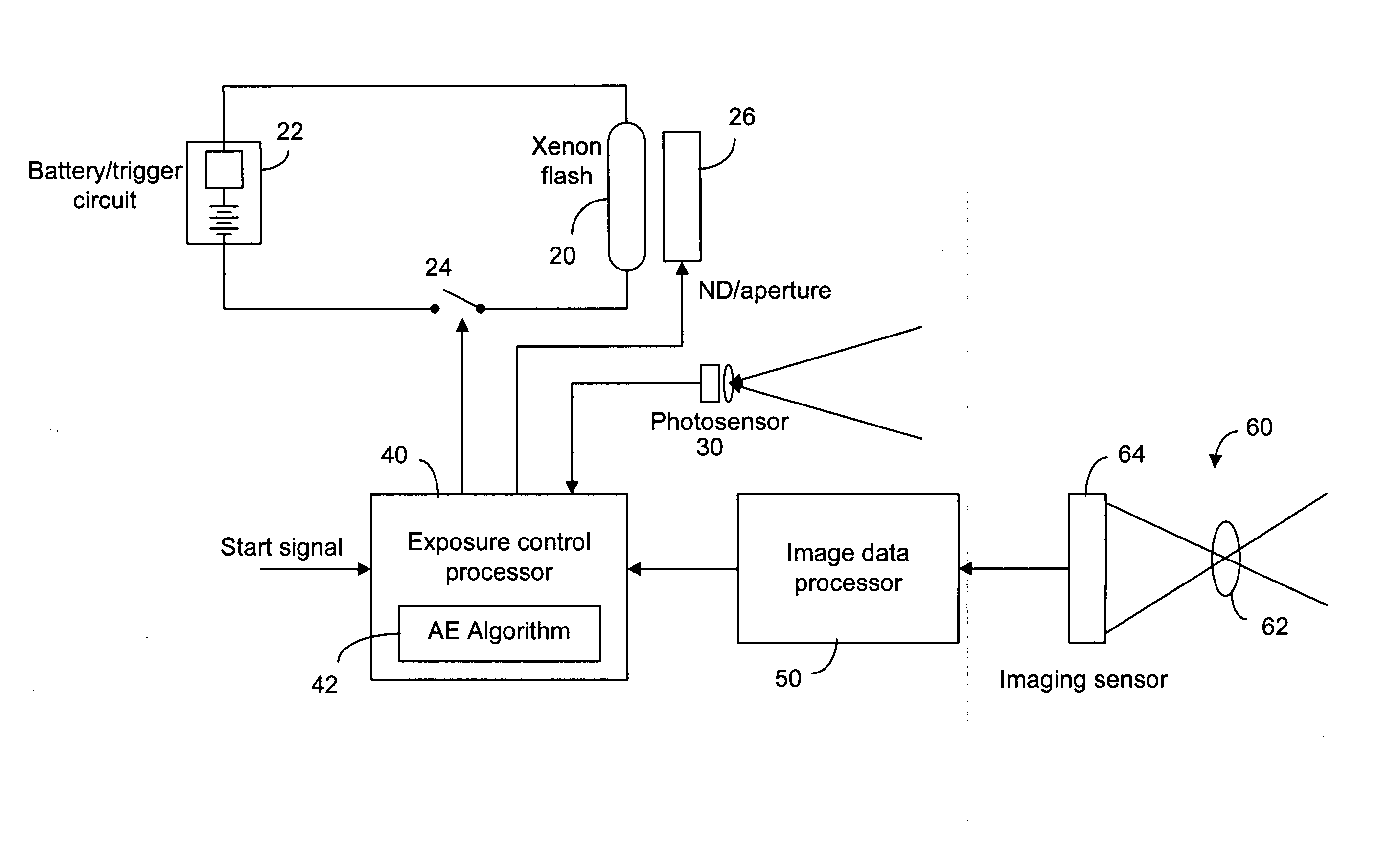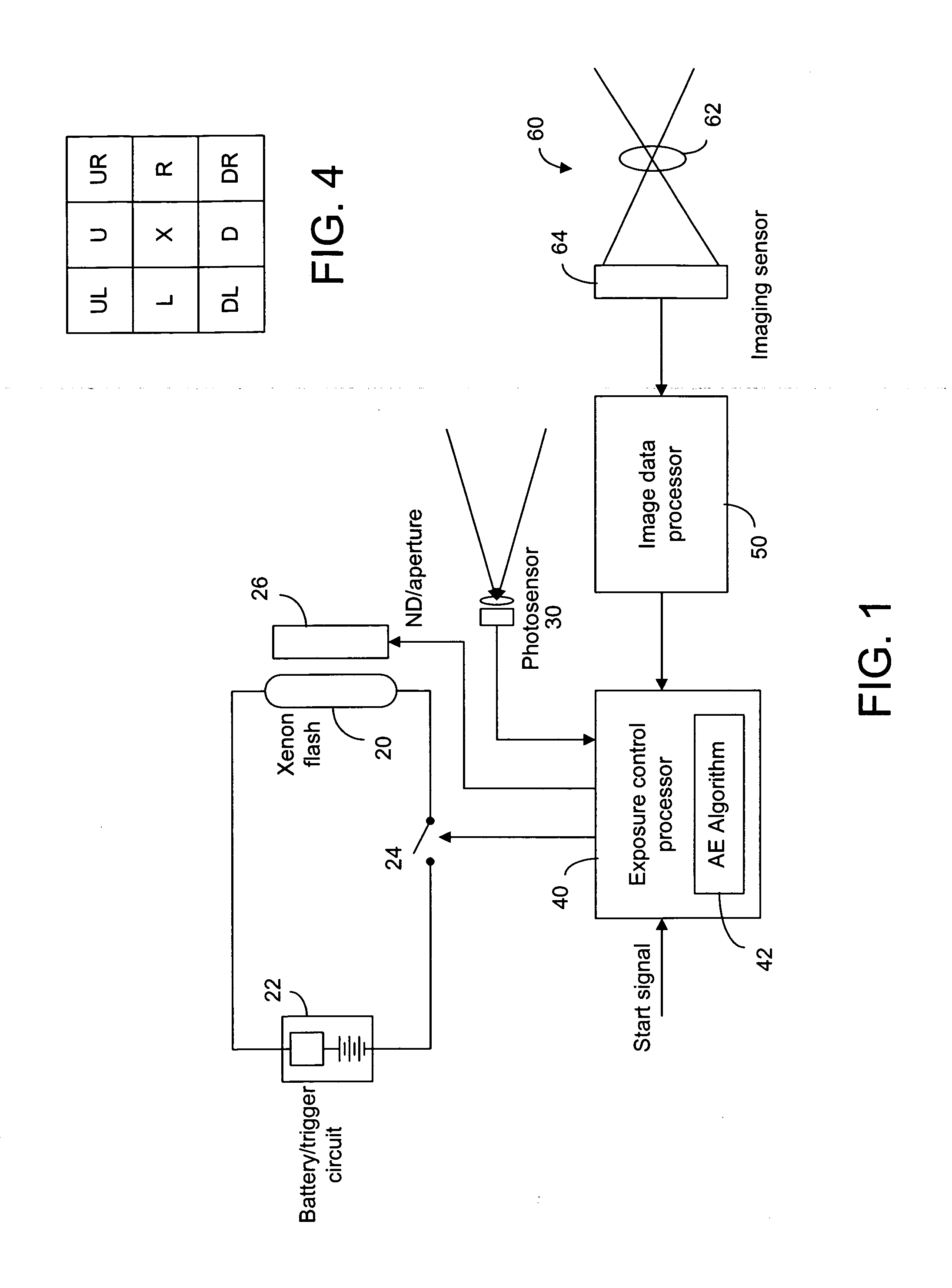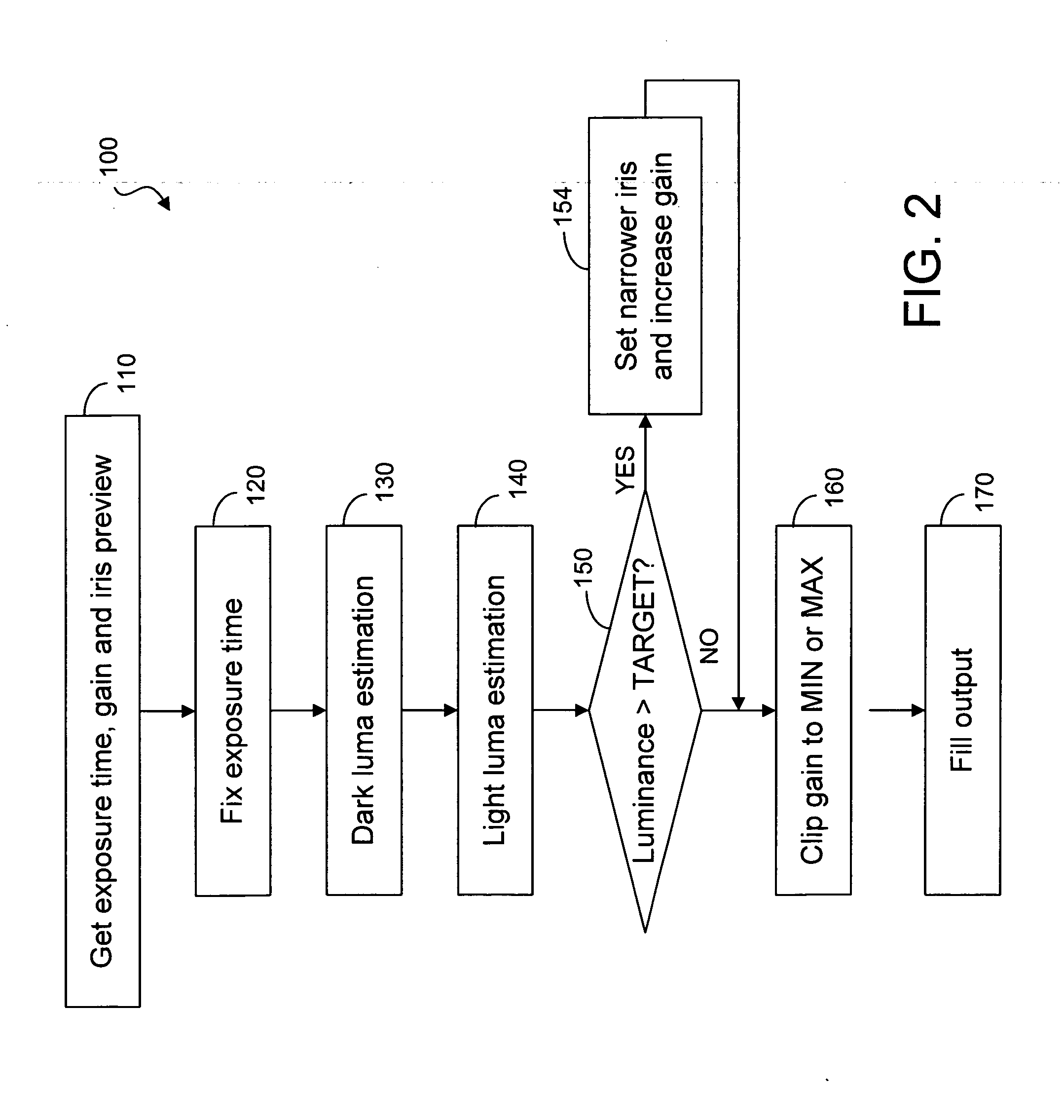Camera flash module and method for controlling same
a technology of flash module and flash module, which is applied in the direction of exposure control, color signal processing circuit, instruments, etc., can solve the problem of not being able to easily control the amount of light to produce a consistent amount, and achieve the effect of reducing the flash intensity
- Summary
- Abstract
- Description
- Claims
- Application Information
AI Technical Summary
Benefits of technology
Problems solved by technology
Method used
Image
Examples
Embodiment Construction
[0035]The present invention is concerned with controlling the amount of light provided by a camera flash when taking pictures. As shown in FIG. 1, the camera flash 20 is powered by a power source 22 and triggered by a trigger pulse provided by a trigger control 24. A flash intensity attenuator or reducer, such as a mechanical iris or a neutral density (ND) filter 26 can be placed in front of the camera flash 20 to reduce the flash intensity. An exposure control module 40 having a software program 42 embedded in a computer readable storage medium to implement a flash intensity control algorithm based on the ambient light, the nature of the scene and the photographic mode, for example. A photosensor 30 can be used to detect the scene brightness with or without flash light, for example. In addition, image data from the camera 60 is used in the auto-exposure calculation. Typically, the camera 60 has an imaging sensor 64 and one or more lenses 62 to form an image on the imaging sensor 64...
PUM
 Login to View More
Login to View More Abstract
Description
Claims
Application Information
 Login to View More
Login to View More - R&D
- Intellectual Property
- Life Sciences
- Materials
- Tech Scout
- Unparalleled Data Quality
- Higher Quality Content
- 60% Fewer Hallucinations
Browse by: Latest US Patents, China's latest patents, Technical Efficacy Thesaurus, Application Domain, Technology Topic, Popular Technical Reports.
© 2025 PatSnap. All rights reserved.Legal|Privacy policy|Modern Slavery Act Transparency Statement|Sitemap|About US| Contact US: help@patsnap.com



